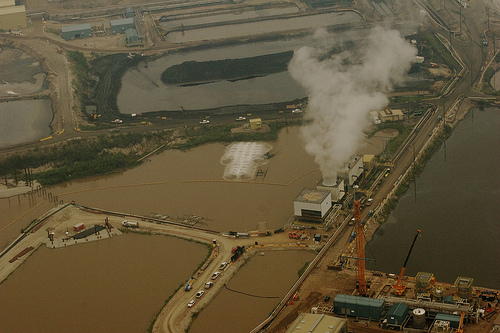
www.OilSandsWatch.org
The Keystone XL debate is much more than a fight over an oil pipeline. Whether we like it or not, the Alberta model of high carbon resource extraction is under scrutiny in the highly public Keystone debate unfolding in Washington.
A negative decision from the US President will hinge on issues that are ultimately independent of Keystone XL’s routing or even pipelines in general. President Obama will have to reflect on the growing consensus that we have to reduce greenhouse gas (GHG) emissions or face catastrophic climate change and he must, by extension, consider the role played in that by Canada’s oil sands.
A Presidential “No” on Keystone will seal the fate of the KXL project. But it will also represent a very public repudiation of Alberta’s oil sands bitumen and the development model that it represents. While this is happening, Edmonton & Ottawa can do little but bark from the sidelines because they’ve failed to implement an effective made-in-Canada plan to curtail their oil sands emissions.
Those who see Alberta as an economic engine for the rest of Canada should be very concerned as no one has yet been able to show how we can have growth in oil sands production while meeting Canada’s commitments to lower GHG emissions. As things stand, these outcomes are incompatible and on a clear collision course. Our political leaders are missing the point if they think Alberta oil sands producers can outrun their environmental problems simply by pursuing other markets. They can’t.
Bitumen’s substantial carbon footprint will follow it along every pathway to the world’s energy marketplaces. Oil-by-rail or the pipelines proposed for British Columbia or for the East Coast will not rescue stranded oil sands production if this is seen as contributing to the larger and unresolved problem of climate change.
While some governments are taking concrete steps to cut greenhouse gas emissions, their efforts risk being overwhelmed by the policies of their neighbours. The phase-out of cheap coal-fired electricity generation in Ontario will cut that Province’s GHG emissions by an amount equivalent to taking 7 million cars off the road. On the other hand, a recent study by the Pembina Institute estimated that the Energy East pipeline, alone, will enable additional Alberta heavy oil production generating life cycle GHG emissions equivalent to putting those 7 million cars back on Canadian roads.
It’s clear we can no longer look at the impacts of these developments in isolation and we cannot ignore what’s happening on this issue in the wider world. Annual Reports from the IMF, the World Bank, and some Oil Companies give clues that the world’s energy markets are beginning to get serious about accounting for climate change risk. There is growing recognition that carbon will be subjected to increasingly punitive policy and regulatory pressures designed to reduce overall use of fossil fuels. Those efforts will be, as a priority, aimed at curtailing or eliminating production from the most carbon intensive sources.
Bond rating agencies are already taking note of the risk of negative cost impacts that will be felt within the lifespan of long-lived capital assets like bitumen mines, their processing and upgrading facilities, and the pipelines which serve them. The worst GHG offenders like coal and ultra heavy oil projects will become increasingly harder to finance. This month, Norway’s Parliament, owner of the world’s largest sovereign wealth fund valued at nearly $1 trillion, is studying the withdrawal of that fund from investments in oil and gas and coal. Other fund managers are looking at de-carbonizing their portfolios in anticipation of the risk of stranded assets.
Regardless of President Obama’s decision on Keystone XL, these risks coupled with growing costs of production and predictions of steady or declining oil prices in the medium term, suggest that prospects are less rosy for significant growth in Canadian bitumen production. That is bad news for the economies that are dependant on the spin-offs.
Most worrisome is that Canada’s leaders seem to be oblivious to these risks with time running out and without a sustainable plan B.
© Fairweather Hill 2014
